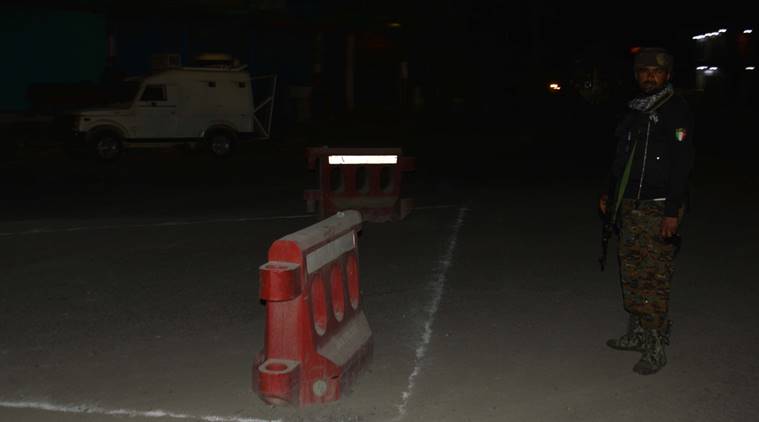Terror in Kashmir
July 11, 2017 | Expert Insights

Terrorists opened fire on a bus filled with Hindu pilgrims in Jammu & Kashmir on Monday, July 10. The attack took place in Anantnag district in Jammu & Kashmir and resulted in the deaths of seven people. At least 20 others were injured.
According to the latest reports, terror outfit, Lashkar-e-Taiba was behind the attacks.
Background
The people who were attacked were on a pilgrimage called the Amarnath Yatra. The Amarnath cave, in J&K, is considered one of the holiest sites in Hinduism. Sitting at 12,756 ft height, it is only during the summer months that it is open to pilgrims.
The area has also attracted its fair share of terrorist activities. Between 1991 and 1995, the pilgrimage was banned because of increased threats from terrorists. But in 1996, militants had vowed to not attack pilgrims going to the region.
All of this changed in 2000, when a terrorist group attacked and killed 30 people who were on the pilgrimage. This had occurred in Pahalgam town, which is also in Anantnag district. At the time, the Prime Minister of India, Atal Bihari Vajpayee had said that it was Lashkar-e-Taiba behind the attacks.
Lashkar-e-Taiba, is one of the biggest militant outfits in South Asia. It has been linked some of the most horrific terror attacks that have taken place on Indian soil including the 2001 Indian Parliament attack and the 2008 Mumbai attacks. Among its main objectives, the outfit has said that it wants to “liberate” Muslims who live in India-occupied Kashmir. While Pakistan has officially “condemned” the group, reports have noted that the country is the base for the terror outfit.
Kashmir itself is a volatile region. India currently administers over 43% of the total region but there are multiple insurgent forces who have been locked in conflict with the Indian Army for decades. But many separatist leaders in the past have vowed to not attack Hindu pilgrims as they did not have a problem with ordinary India.
Analysis
The bus with the pilgrims had been surrounded by terrorists and shot at near a security checkpost. The terrorists had also fired at an armored police car at 8.30pm. This bus did not have a police escort at the time of the attacks because it wasn’t a part of the official tour.
A massive manhunt has now been launched for Abu Ismail, the supposed mastermind of the current terror attack. He is said to be the successor of Abu Dujana, the Lashkar’s chief in Kashmir. Ismail is a Pakistani citizen.
A senior police J&K official spoke to News18 and said, “We have identified Ismail and two other men who were with him during the attack. We have also identified the people who drove them to their spot and who brought them their weapons. We know the direction in which the terrorists are hidden and we’ll hunt them down soon.”
One of the theories that is being floated by the armed forces is that the group was motivated by revenge. An LeT operative going by the name Sandeep Kumar Sharma alias Adil had already been arrested in connection to the attacks.
Assessment
Our assessment is the recent terror attack shows that terror outfits in the region may no longer be abiding by their own promise of not attacking pilgrims. Thus, given the increased instability, the Indian government should also take steps to ensure only authorized vehicles with proper security escort are allowed to pass through the region.








Comments